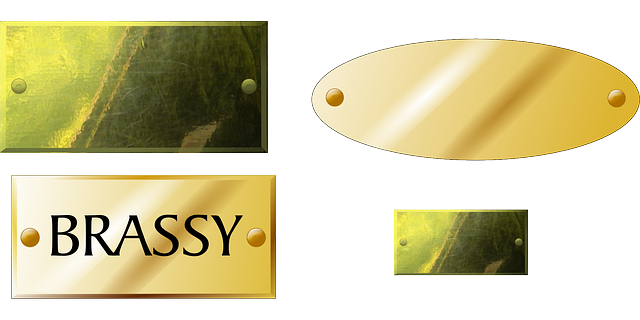
When considering retirement savings strategies, understanding the differences between Traditional and Roth IRAs is crucial for making informed IRA investing decisions. Both account types offer tax advantages tailored to different financial scenarios: Traditional IRAs provide immediate tax deductions with taxes due on withdrawals, potentially beneficial if you anticipate a lower tax bracket in retirement. Conversely, Roth IRAs require contributions made with after-tax dollars but offer tax-free growth and withdrawals, ideal for those expecting higher income taxes post-retirement. Diversification within your IRA is essential to mitigate market volatility and protect your retirement savings, with a balanced asset allocation being key to aligning your investment risks with your financial goals. Low-cost index funds and ETFs can provide broad market exposure at a lower cost, avoiding the pitfalls of actively managed funds and offering stability in volatile times. Investors must weigh the ira investing pros and cons, including tax implications, risk tolerance, and long-term objectives, to determine which IRA type and investment choices best suit their financial future. Regular portfolio reviews are necessary to adapt to changing market conditions and personal circumstances, ensuring your IRA remains optimized for returns while effectively managed for risk.
IRA investing presents a pivotal financial pathway for securing retirement well-being, offering a blend of rewards and risks that savvy investors must navigate with care. This article delves into the intricacies of traditional and Roth IRAs, exploring their distinct investment options and the significant implications they hold for your future savings. We will examine the pros and cons of IRA investing, elucidating key factors to weigh before allocating your capital. Market volatility’s influence on IRA portfolios is a critical aspect we’ll address, providing strategies to help mitigate risks and enhance potential returns. Furthermore, the tax considerations when choosing between traditional and Roth IRAs will be discussed, highlighting their long-term effects on financial health. Lastly, the importance of diversification in IRA investing for effective risk management and asset allocation will be emphasized, ensuring a well-rounded approach to your retirement strategy.
- Understanding Traditional and Roth IRAs: A Comprehensive Overview of Investment Options and Their Implications for Retirement Savings
- Evaluating the Pros and Cons of IRA Investing: Key Factors to Consider Before Committing Your Capital
- The Impact of Market Volatility on IRA Portfolios: Strategies to Mitigate Risks and Optimize Returns
- Navigating the Tax Landscape with Traditional vs. Roth IRAs: Long-Term Implications for Your Financial Health
- Diversification as a Safeguard: Asset Allocation and Risk Management in IRA Investing
Understanding Traditional and Roth IRAs: A Comprehensive Overview of Investment Options and Their Implications for Retirement Savings

When considering retirement savings, it’s crucial to explore the intricacies of Traditional and Roth IRAs, two pivotal account types that offer distinct investment options and implications for your future financial well-being. A Traditional IRA allows for tax-deferred growth of your investments, meaning you pay taxes on contributions and earnings upon withdrawal, typically during retirement when you may be in a lower tax bracket. This can be advantageous as it potentially reduces your taxable income in your earning years. On the other hand, Roth IRAs are funded with after-tax dollars, offering tax-free growth and withdrawals provided certain conditions are met. This feature is particularly beneficial for those who anticipate being in a higher tax bracket come retirement.
Both Traditional and Roth IRAs have their respective pros and cons when it comes to IRA investing. With a Traditional IRA, the immediate tax deduction can be appealing, as it lessens your taxable income now. However, you’ll need to remember that taxes are due on withdrawals, which could affect your retirement income if tax laws change. Roth IRAs, in contrast, offer the allure of tax-free growth and withdrawals, but contributions are not tax-deductible. The lack of an immediate tax break might be a drawback for some savers. Yet, Roth IRAs can provide significant financial advantages in retirement, especially if you expect investment earnings to outpace inflation or if you believe your tax rate will be higher upon withdrawal.
Investors must carefully weigh the IRA investing pros and cons of each account type to determine which aligns best with their retirement savings goals and tax situation. A comprehensive understanding of Traditional and Roth IRAs is essential for making informed decisions that can positively impact your long-term financial security.
Evaluating the Pros and Cons of IRA Investing: Key Factors to Consider Before Committing Your Capital

When considering IRA investing, it’s crucial to weigh the advantages and disadvantages to make informed decisions about your retirement savings. The tax-advantaged nature of Individual Retirement Accounts (IRAs) stands as a significant pro, allowing for compounded growth with potential tax breaks on contributions and investments. Traditional IRAs may offer immediate tax deductions for contributions, while Roth IRAs can provide tax-free withdrawals in retirement, contingent on eligibility criteria. These tax benefits are designed to enhance the growth of your investments over time, a key factor in the long-term success of your IRA portfolio.
On the other hand, IRA investing comes with its own set of constraints and considerations. For instance, early withdrawal penalties and required minimum distributions (RMDs) at a certain age are rules to be mindful of. The range of investment options within an IRA can be vast, yet this variety also necessitates careful evaluation to ensure alignment with your risk tolerance and financial goals. Additionally, the responsibility for investment decisions lies solely with you, the investor. This means thorough research and due diligence are required to navigate the market effectively. Understanding the volatility associated with certain investments and how they fit into your broader retirement strategy is essential. By carefully evaluating the pros and cons of IRA investing—including tax benefits, investment choices, withdrawal rules, and personal risk tolerance—you can better position your capital for retirement while mitigating potential risks.
The Impact of Market Volatility on IRA Portfolios: Strategies to Mitigate Risks and Optimize Returns

IRA investing presents a unique set of opportunities and challenges, particularly in the face of market volatility. The fluctuations of the stock market can significantly impact IRA portfolios, potentially eroding retirement savings or, conversely, boosting returns when markets rebound. To navigate these waters effectively, investors must understand the pros and cons of various IRA investing strategies. One approach to mitigate the risks associated with market volatility is diversification across asset classes. By allocating investments among stocks, bonds, real estate, and other vehicles, IRA holders can spread exposure and reduce the impact of a downturn in any single sector. Another strategy is to employ a tactical asset allocation approach, which involves adjusting the portfolio’s asset mix based on market conditions. This dynamic response can help protect against substantial losses during market corrections or bear markets.
Furthermore, investors should consider the role of low-cost index funds and exchange-traded funds (ETFs) within their IRA portfolios. These investment vehicles often provide broad market exposure at a lower cost compared to actively managed funds. They also offer a passive investment strategy that can be advantageous during periods of high volatility, as they are less likely to chase short-term trends that can lead to underperformance. Additionally, for those willing to take on more risk, options like targeted growth stocks or real estate investment trusts (REITs) can offer high returns but come with proportionally higher volatility. It is crucial for IRA investors to weigh these risks and rewards carefully, aligning their investment choices with their long-term retirement goals and risk tolerance. Regularly revisiting and reassessing the portfolio in light of changing market conditions and personal financial situations can further aid in optimizing returns while managing risk within an IRA.
Navigating the Tax Landscape with Traditional vs. Roth IRAs: Long-Term Implications for Your Financial Health

When considering IRA investing pros and cons, one pivotal aspect to navigate is the tax landscape that differentiates Traditional from Roth IRAs. Both account types offer substantial benefits, yet their long-term implications for financial health diverge significantly in terms of tax treatment.
A Traditional IRA initially provides a tax deduction at the time of contribution, allowing for potentially lower taxable income during the year of investment. This can be particularly advantageous for those in higher tax brackets who wish to reduce their immediate tax liability. However, taxes on the funds contributed, along with any earnings, are deferred until withdrawal typically in retirement when tax rates may be lower. This deferral strategy can result in a larger tax burden upon distribution if tax laws change or if individual circumstances shift, potentially affecting one’s financial health in later years.
Conversely, Roth IRAs offer after-tax contributions with no immediate tax benefit. While this might seem like a drawback compared to the IRA investing pros of a Traditional IRA, the Roth IRA provides a significant advantage: tax-free withdrawals in retirement. This feature can be particularly impactful given the compounding growth of investments over time. The absence of required minimum distributions (RMDs) after a certain age also allows assets to continue growing tax-free, potentially providing a more robust financial safety net in retirement.
Investors must weigh these IRA investing pros and cons carefully, considering both their current and future tax situations. A Roth IRA may be the superior choice for those anticipating higher income or higher taxes in retirement, seeking to avoid the future tax liability associated with Traditional IRAs. Conversely, a Traditional IRA might be more suitable for individuals who expect lower earnings or lower taxes in their post-working years. Understanding these nuances is crucial for leveraging the tax benefits of either account type to enhance long-term financial health.
Diversification as a Safeguard: Asset Allocation and Risk Management in IRA Investing

Diversification plays a pivotal role in IRA investing, serving as a safeguard that can potentially mitigate risk and enhance returns within a tax-advantaged framework. Asset allocation, which involves dividing an investment portfolio among different asset classes—such as stocks, bonds, and real estate—is a cornerstone of diversification strategies. By not putting all eggs in one basket, investors utilizing Individual Retirement Accounts (IRAs) can protect against market volatility and sector-specific downturns. For instance, if stocks underperform, bonds may offset some of the losses, providing a more stable investment trajectory. This approach is particularly important for long-term IRA investing due to its susceptibility to economic shifts over time. Risk management within an IRA context also necessitates regular portfolio reviews and adjustments to maintain balance in line with the investor’s risk tolerance and financial goals. It’s crucial for IRA investors to weigh the ira investing pros and cons of diversification, recognizing that while it doesn’t eliminate risk, it can significantly reduce its impact on retirement savings. By considering a well-thought-out asset allocation strategy and staying vigilant about market conditions, investors can navigate the complexities of IRA investing with greater confidence and potentially achieve more consistent investment performance over the long term.
IRAs serve as cornerstones for individuals aiming to secure their financial future, offering a blend of investment options that balance potential rewards with inherent risks. This guide has illuminated the critical aspects of traditional and Roth IRAs, highlighting the diverse investment landscapes they present. By understanding the pros and cons of IRA investing, investors can make informed decisions tailored to their unique financial circumstances and retirement goals. Market volatility inevitably affects IRA portfolios; however, strategic asset allocation and risk management can help navigate these challenges effectively. Moreover, the distinctions between traditional and Roth IRAs in terms of tax implications are pivotal for long-term fiscal health, necessitating careful consideration. Diversification stands as a reliable defense against market uncertainties, underscoring the importance of a well-crafted investment strategy within an IRA framework. In conclusion, thorough evaluation and strategic planning are essential for successful IRA investing, ensuring that your retirement savings are positioned to thrive in various economic climates.







